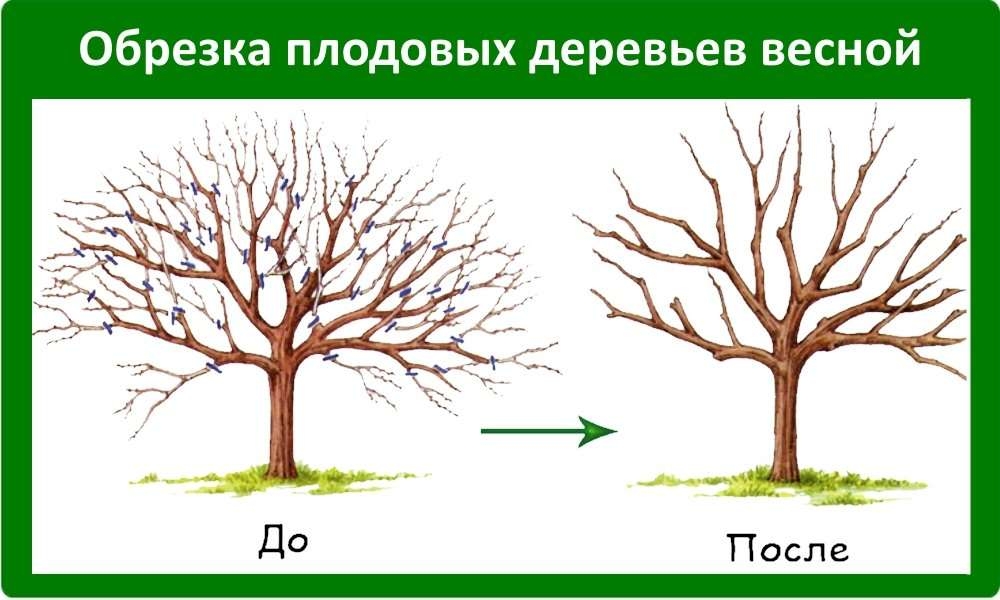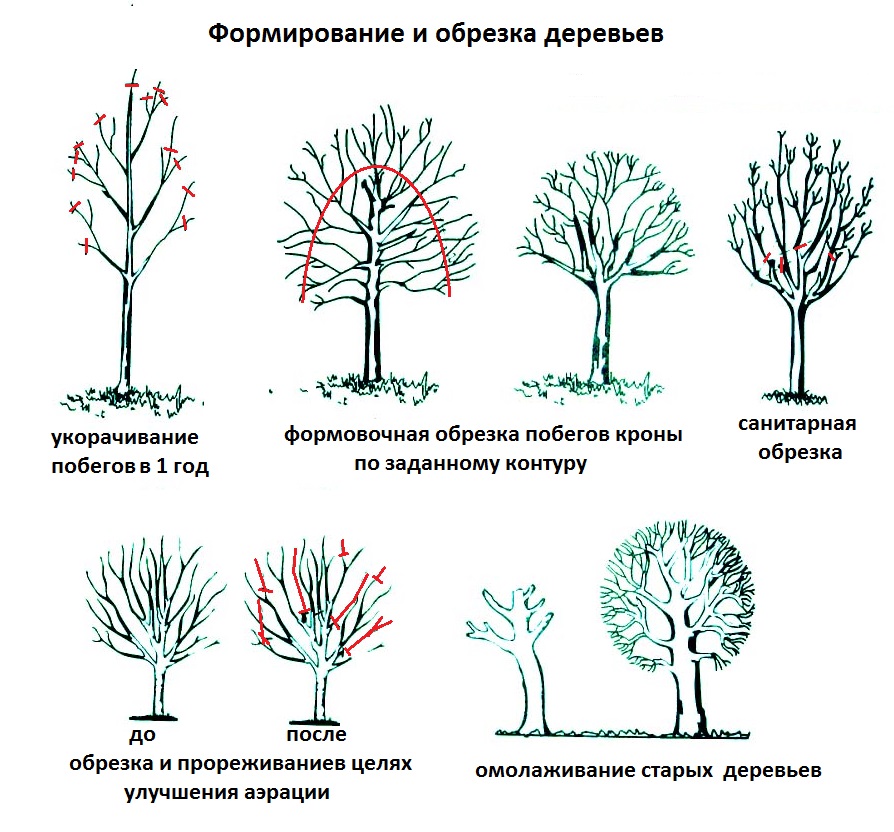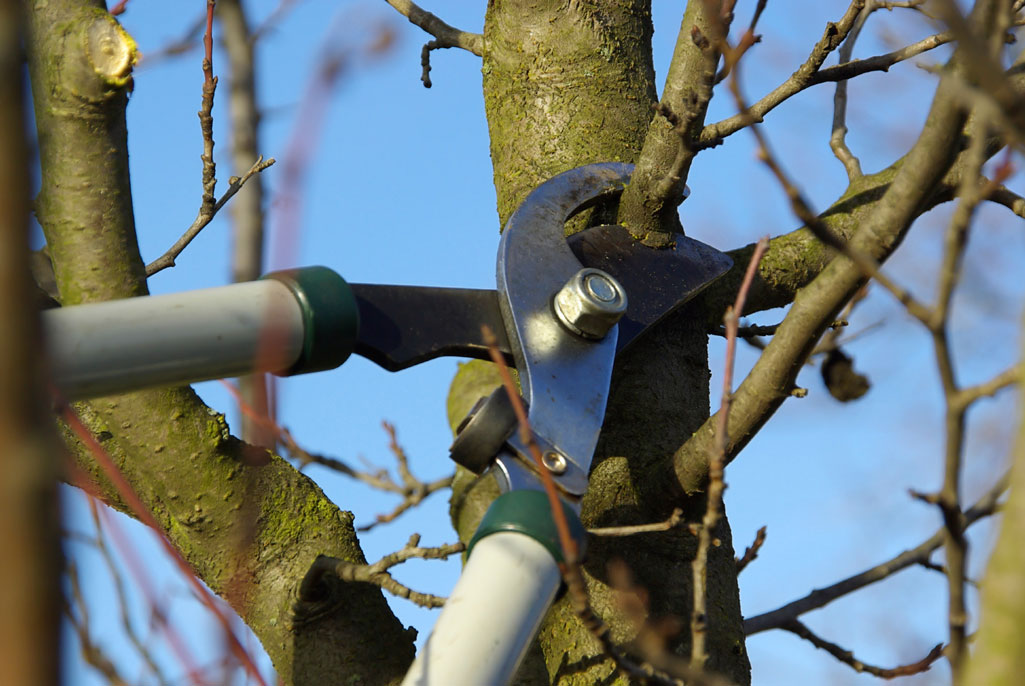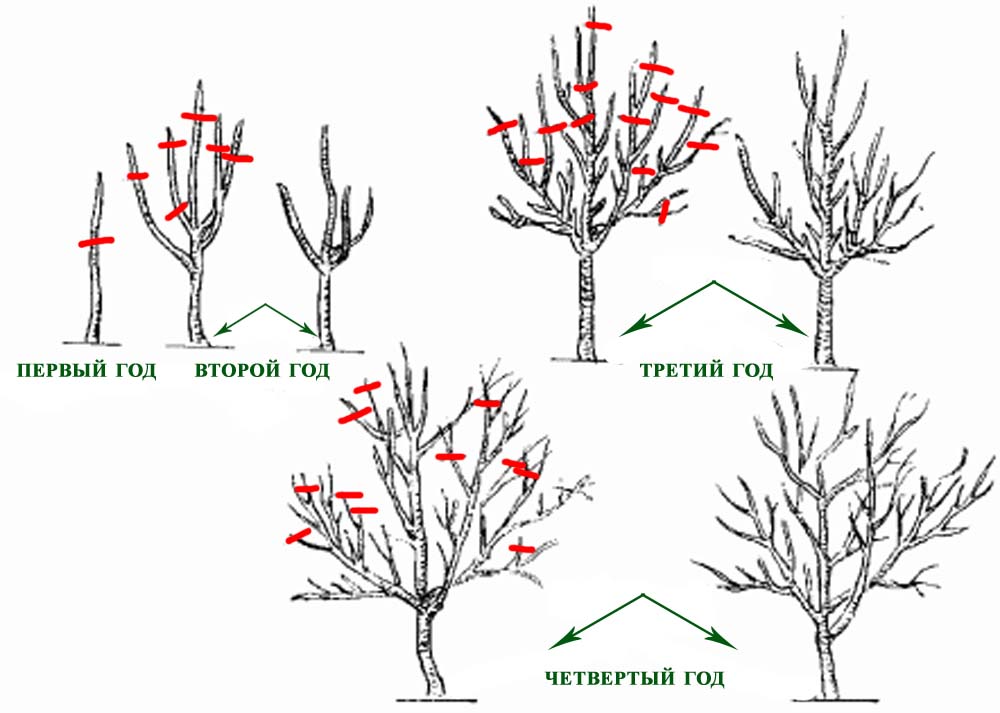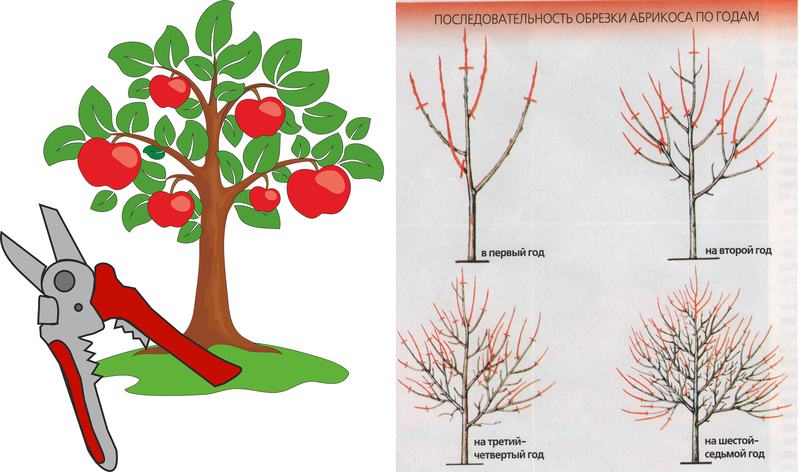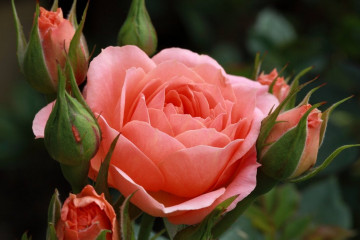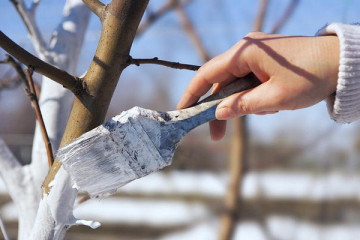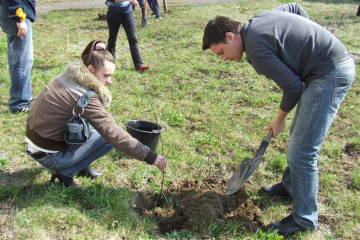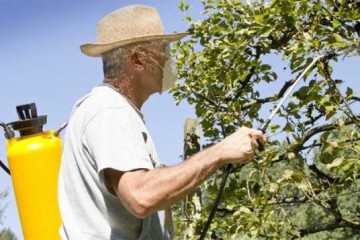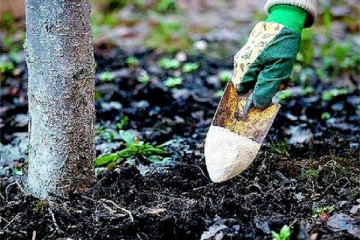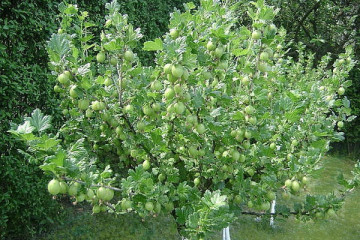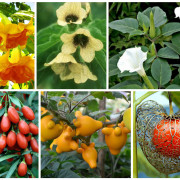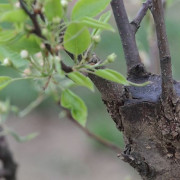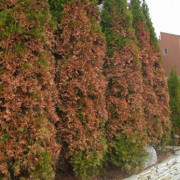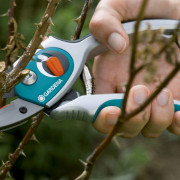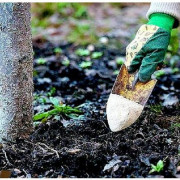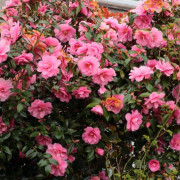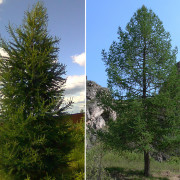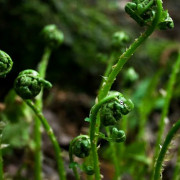Pruning trees - how to properly prune fruit seedlings in spring
Content:
To get a stable and rich harvest, it is necessary to carry out timely and correct pruning of garden trees. If the crown is left too thick, it will not be sufficiently ventilated and let in light. In such conditions, trees are most vulnerable to various disease-causing microorganisms. A weak and diseased plant will not be able to fully develop and bear fruit.
Pruning orchard trees - tips for novice gardeners
Pruning fruit trees is a responsible business; it has its own nuances and rules. For beginner gardeners, before proceeding with the procedure for pruning excess and diseased branches, you should familiarize yourself with these rules.
Types of pruning fruit trees
Removing unnecessary and weak branches pursues several tasks, depending on which pruning is divided into several types. Each of them has its own characteristics and consequences. Distinguish between formative, sanitary and anti-aging pruning.
Crown formation
First of all, pruning of trees is needed for the correct formation of the crown, to prevent its excessive growth. As a result of the procedure, a strong skeleton is created, side branches begin to actively grow and the gardener receives more fruits.
If pruning is rarely done or ignored altogether, the crown reaches enormous dimensions, and the fruits are located in hard-to-reach places. It is recommended to start thinning the crown from the next year after planting. Most often, gardeners choose two schemes: tierless and sparse tier.
Sanitary pruning of fruit trees - what you need to know
Annual autumn pruning of diseased or dry branches is called sanitary. It is carried out as follows:
- Shoots are removed above the outer bud, the skeletal branch is cut into a ring.
- A diseased and dried branch is cut off with the capture of a healthy part.
- A vertically located branch is cut with an oblique cut.
- After the completion of the procedure, the wounds must be lubricated with garden varnish or other means.
Regular sanitization heals the plant and increases its fertility. The tree lives for a long time, while the risk of various diseases of fruit crops is significantly reduced.
Purpose of anti-aging pruning
Rejuvenating pruning is done when there are too many old trees in the garden that have noticeably reduced yields. The following procedure is recommended:
- Examine the crown, identify all dying, crossing, rubbing or growing in the center of the branch.
- Find a strong fat shoot at the base of these branches.
- Step back 2 cm from the base of the shoot and cut the branch.
- Treat the cut site with garden pitch.
If there are not one, but several young shoots next to the cut, the wound will heal faster.
Safety precautions for pruning fruit trees
Pruning trees in the garden requires compliance with safety rules:
- Prevent children under 18 years of age from pruning and not allowing children under the age of 18 to approach the procedure.
- Wear protective gloves to prevent cuts or splinters, as well as helmets and goggles.
- Use a stepladder (not a ladder!) With sufficiently wide steps. To avoid slipping on the stairs, wear shoes with grooved soles. Do not climb the stairs together.
- Do not use electrical appliances with damaged cables or wires.
- Do not carry out crowning near electrical wires.
- Do not go from stairs to tree, and work during or immediately after rain. Do not stand with one foot on a ladder and the other on a tree.
- Do not be under the tree while thinning.
- Monitor the serviceability of working tools, do not throw them to each other, store in special bags or cases.
- Use special hooks to remove cut branches.
Choice of tools and equipment
When choosing pruning tools, you should follow the advice of experienced professional gardeners:
- The tool should fit comfortably in your hands.
- A hacksaw, pruner, or grafting knife should have brightly colored parts so that they can be easily found in the grass.
- It is desirable that the inventory be equipped with special loops, so it can be hung on the wrist and not dropped during operation.
- In no case should you cut off the branches with a rusty tool, otherwise the tree may die.
For correct and high-quality pruning of garden trees, you will need tools:
- Suchko�a cut on the bar - useful if there is no way to climb the stairs.
- Hacksaw - it is used to cut branches with a large diameter. You can not use a chainsaw, the wounds she made on a tree practically do not heal.
- Garden knife - handy for cleaning ready-made cuts, must be perfectly sharp.
- The pruner is a handy and safe tool for pruning small branches.
Fresh cuts need to be processed. To do this, you will need a garden varnish, paint on linseed oil, Ranet paste or other similar means.
Cutting technique that allows you not to injure the tree
Cutting large branches can injure the tree. To prevent this from happening, the saw cut is made as follows:
- An initial cut is made from the bottom so that the branch does not break and tear off the bark from the tree.
- Next, you need to cut the branch above the cut made.
- After removing the branch, the saw cut is leveled onto the ring, the irregularities are cleaned with a knife and the wound is smeared with paint or pitch.
Why is it better to turn to professionals
At first glance, crown planting of horticultural crops is a simple procedure that you can handle on your own. However, for an inexperienced person, there are certain risks in carrying it out: falling from a height, breaking off a heavy branch, the danger of a branch contacting an electric wire, working with a sharp tool. Therefore, if a novice gardener does not know how to properly prune trees, it is better to seek help from arborists. These are specially trained people who know the correct pruning technique and all the skills necessary for this.
Features of pruning fruit trees
Fruit trees are pruned in any season except winter: they sleep during the cold season.Pruning times vary by region. In the northern and central regions of Russia, branch shortening is not carried out in the fall. In these places, the cold comes early, and the trees will not have time to heal their wounds. It is recommended to start pruning in these regions in the spring, after waiting for freezing temperatures. The procedure must be completed before buds open on the trees.
When and which trees in the garden can be pruned
In order not to harm the future harvest, it is important to know when to prune the tree. Pears and apple trees are the first to be cut in the garden, since these trees are characterized by frost resistance. Some fruit crops are recommended to be shortened only after the leaves appear on the branches, otherwise the cuts may become covered with fungal bloom. These include cherry plum, plum, apricot, sweet cherry and cherry.
Some shrubs (for example, climbing roses and lilacs) have flowers formed on last year's shoot, so they are not recommended to be cut.
At what age should fruit trees be pruned
In summer, branches are pruned from plants older than 3 years in order to improve the quality of the fruit. After such a procedure, the rapid development of young shoots begins. The pluses of summer pruning include life-giving juice, thanks to which wounds heal quickly.
In the south of the country, gardeners carry out winter pruning of such trees in order to reduce the yield of young seedlings. After 3 years of fruiting, they are allowed to rest. Pome-bearing breeds are cut off first, and then stone-fruit breeds.
A tree that is more than 10 years old is shown rejuvenating pruning. It is made at any time of the year, but better in spring. Formative spring pruning begins in the second year after planting.
How to properly prune a seedling to get more harvest
When pruning a young seedling, first form its stem: remove all branches located at a distance of 40 cm from the ground. Next, determine the main 3 - 4 strong branches, which will become the skeleton of the crown. All other branches are removed with a cut "under the ring".
The left branches are cut so that their ends are at the same level. They must develop evenly and equally. It is important to consider the location of the kidney near which the cut is made. If it is on the outside of the branch to be cut, the young shoot will grow in the same direction. If the bud is on the inside, the branch will grow in the center of the crown.
How to prune peach and apricot
For peach and apricot trees, all types of pruning are used, and they are done regularly and in any season except winter. In cold regions, spring pruning begins after the first leaves appear, when all diseased and dying branches are well identified.
The formation of the crown of peach and apricot begins from the second year of the tree's life. Until this period, only pinching of a small apical part is allowed to stimulate new lateral shoots.
Spring pruning step-by-step algorithm:
- A stem with a length of 50 cm is formed.
- Several skeletal branches are distinguished, which are located at an angle to the conductor and look in different directions. Two kidneys are left on them, the upper one should be on the outside.
- The guide is shortened to the upper side branch.
- All frozen silt and broken branches are removed.
- In order to rejuvenate the peach, remove all branches that are 4 years old or more.
In the summer, dead shoots are removed, as well as all new branches directed vertically upward or deep into the crown. If too many fruits are tied on thin shoots, the branches are shortened, and the ovaries are thinned out.Autumn pruning consists of removing all remaining diseased and broken branches, as well as shortening weak and poorly ripened shoots.
Peach and apricot are light-loving crops. If their crowns are too dense, sufficient light does not enter the fruiting shoots. This affects the quantity and quality of the fruit. Regular thinning and pruning of the branches of these trees is the key to a stable and rich harvest.
On the question of how to properly prune a fruit tree so as not to harm it, many gardeners are guided by favorable and unfavorable days. According to the lunar calendar, it is advisable to prune on the new moon and on the waning moon. In this case, the sign of the moon is taken into account. A growing phase in a barren sign is suitable for pruning. These signs include Aries, Aquarius, Leo, Scorpio, Virgo, Gemini, and Sagittarius.
Timely execution of all procedures for the care of fruit trees makes the garden truly blooming and fruitful. Pruning plays one of the most important roles in yield management. It not only allows you to get more fruits from trees, but also makes them healthy and long-livers. The listed recommendations on the timing and rules for pruning will help novice gardeners not harm garden crops.
